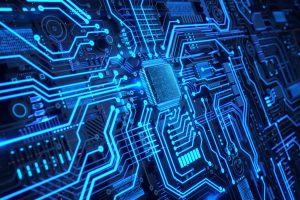Circuit Board
A circuit board is the foundation of modern electronics and is used to connect components, allowing them to work together as a system and perform complex tasks. It is typically made of insulating material, often fiberglass, with copper layer overlays and conductive pathways, called traces. The conductive pathways are etched onto the copper layers and allow electrical signals to pass through. The circuit board also includes pads for component leads, vias to pass connections between layers of copper and a protective coating.
Historically, circuit board were assembled by connecting the component leads to copper PCB traces with solder. This was a manual process that required skill and experience to successfully complete. Today, high density interconnect (HDI) designs with thousands of small connections and multiple electrical interfaces power everything from smartphones to heart rate monitors to rockets. They can be made much more efficiently and with fewer errors using automated processes like SMT and DPPM, but are still assembled by hand by experienced technicians.
The insulating materials for the circuit board are typically composites such as woven fiberglass cloth and epoxy resin. They have a dielectric constant that determines the speed at which electrical signals travel through the material and a tracking resistance that measures how well it resists stray currents from crossing over adjacent traces on the surface. The conductive material used for the traces is copper, which is an excellent conductor of electricity. The copper is plated onto the laminate with either additive or subtractive methods, and the resulting pattern of tracks is then soldered to the underlying pad structures by wave or selective soldering.

What is a Circuit Board?
After the PCB is soldered, it is inspected and tested to ensure that it functions as intended. If any defects are found, the components are removed and replaced with new ones, a process called rework. This allows technicians to fix problems that would be difficult or impossible to resolve with wires alone.
PCBs are a key part of most electronic devices, including computers and mobile phones. They are essential to connect and power them, and they are also an important part of military technology and aerospace systems. The invention of the printed circuit board in the 1930s enabled radio sets to be made more efficiently and economically.
The PCB design process begins with the creation of a schematic diagram, which is then translated into a layout on a clear Mylar sheet that is two or four times the size of the final PCB. Initially, this was done manually, but rub-on dry transfers of common component pin pads greatly increased efficiency. The layout was then photolithographically reproduced on the photoresist coating on the blank copper-clad substrate.
Single-sided PCBs have components mounted on one side and the back surface is fully copper (ground). Double-sided circuit boards have components on both sides and the inside or rear surfaces are populated with traces. The back of the boards is either partially or fully populated with a green solder mask.